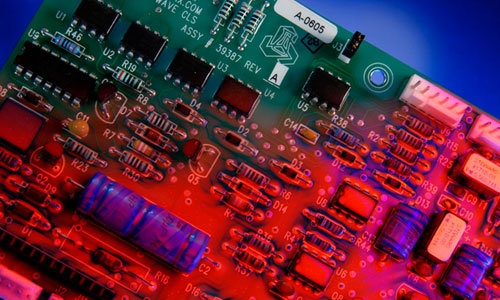涂覆和检查三防漆
使用方法
有多种方法可以将三防漆应用于印刷电路板,但使用哪种方法合适取决于一些关键标准,包括所用材料的类型、成本和需要处理的电路板数量。常见的应用方法包括自动选择性应用、自动喷涂、刷涂、帘式涂层、手动喷涂和浸涂。以下是每种方法的简要概述及其一些优点和缺点。
* 可重复的工艺,实现功能性顶面覆盖
* 中到高容量应用
* 系统成本比喷涂更高
* 专为重复性而设计
* 适合中等批量应用
* 可应用于在线固化操作
* 最适合短期生产、原型制作以及修复/返工后的修补
* 也适用于高地形组件
* 初期成本较低,但难以实现统一覆盖
* 当板材在传送带下方经过时,材料不断落下
* 适合覆盖复杂形状和小批量生产
* 应密切监测粘度
* 涂覆三防漆的最快方法
* 粘度稳定,结果可靠一致
* 需要进行掩膜,但实施成本合理
浸渍
* 将 PCB 浸入三防漆中,然后悬挂晾干
* 适用于涂层小部件
* 可能会出现条纹、厚度不一致和表面不均匀的情况
注意:浸渍对于光固化三防漆几乎不切实际,因为它需要复杂的设备设置。
接触电子涂层技术(ECT),Dymax 的首选合作伙伴,提供三防漆应用服务方面的帮助。ECT 拥有 25 年以上的经验,为加拿大和美国的制造商保护关键电子产品。
检查方法
印刷电路板涂好保形涂层后,需要进行仔细的质量检查,以确保涂层没有瑕疵。有几种方法可以实现这一点。
所有行业认可的三防漆在暴露于黑光时都会发出荧光。可以使用现成的黑光或 365 nm LED 灯。发光外观有助于操作员或视觉系统检测涂层的存在和空隙。大多数三防漆都会发出蓝色荧光。手动检查通常是最常用的方法。简单的视觉系统可用于 100%半成品检测。较新的 3-D 激光测量系统也可用,用于高可靠性应用。
新技术的开发,例如 Ultra-Red® 荧光,使PCB制造商能够增强粘合线检查流程和产品认证。采用 Ultra-Red® 配制的涂层在暴露于低强度紫外线之前保持透明,此时它们会发出鲜红色的荧光。这在粘接自然发出蓝色荧光的基材(例如 PVC 和 PET)时特别有效。Ultra-Red® 技术还会产生独特的光谱特征,制造商可以使用它进行产品认证。阅读病历关于这种荧光剂如何帮助验证是否使用了粘合剂。

